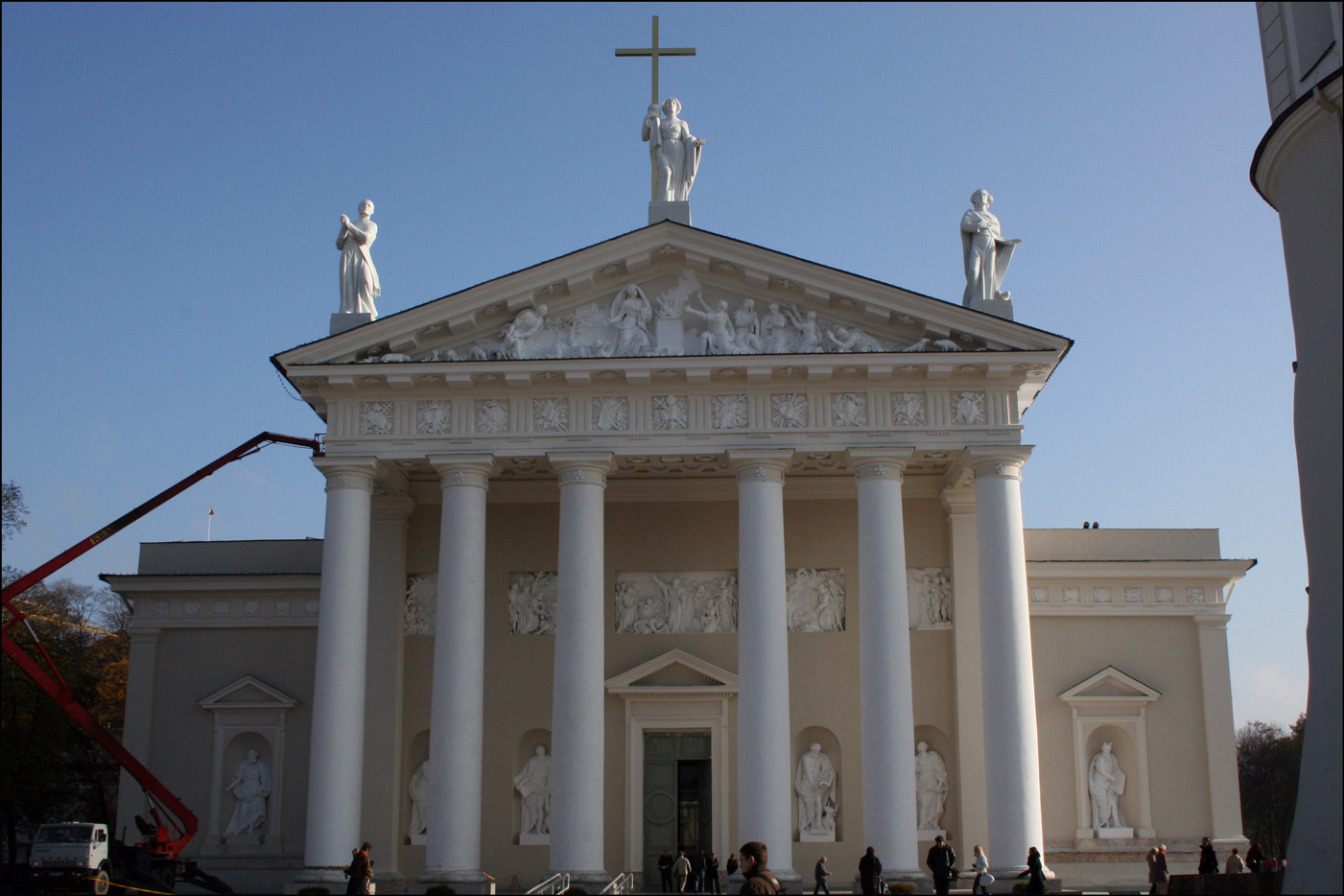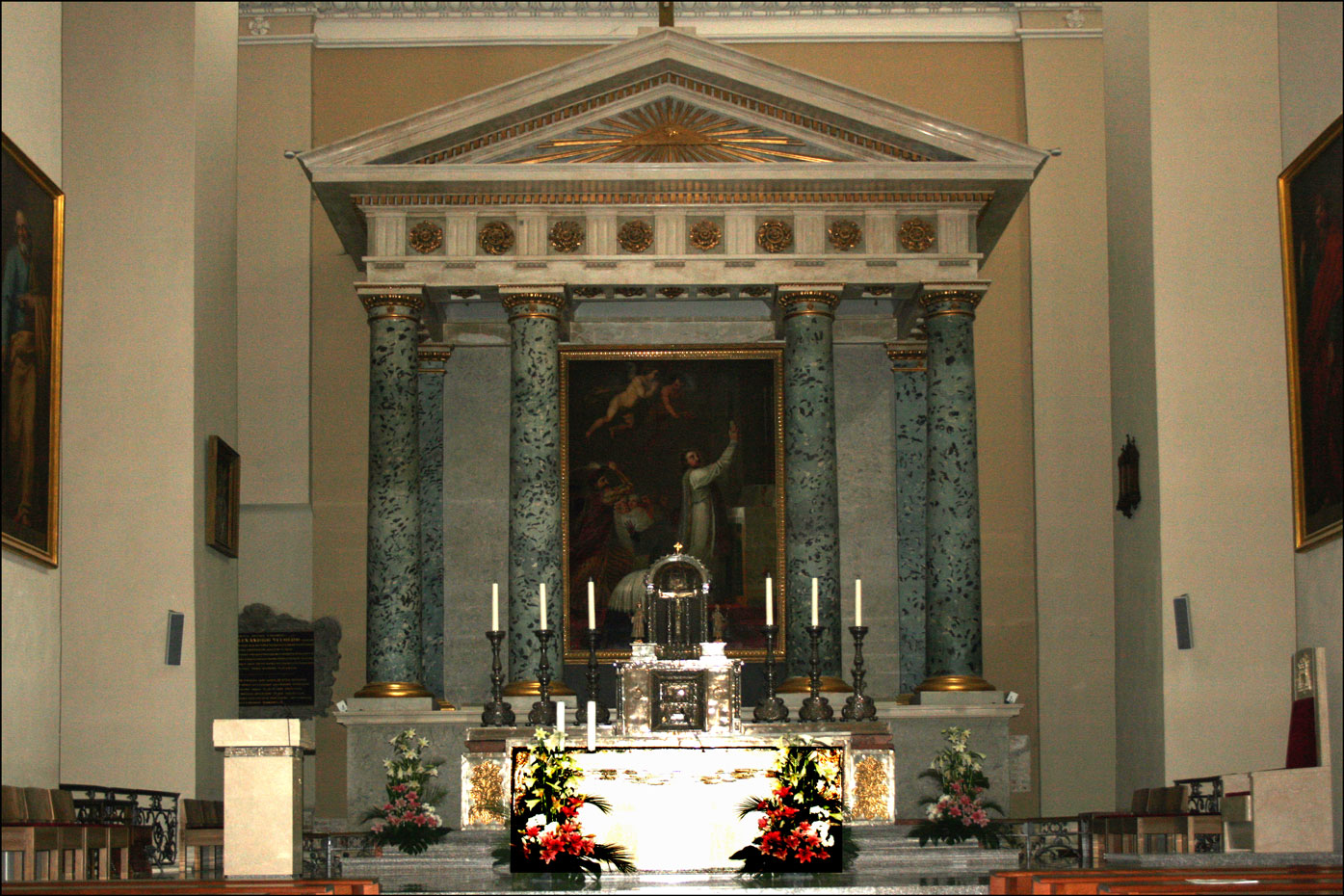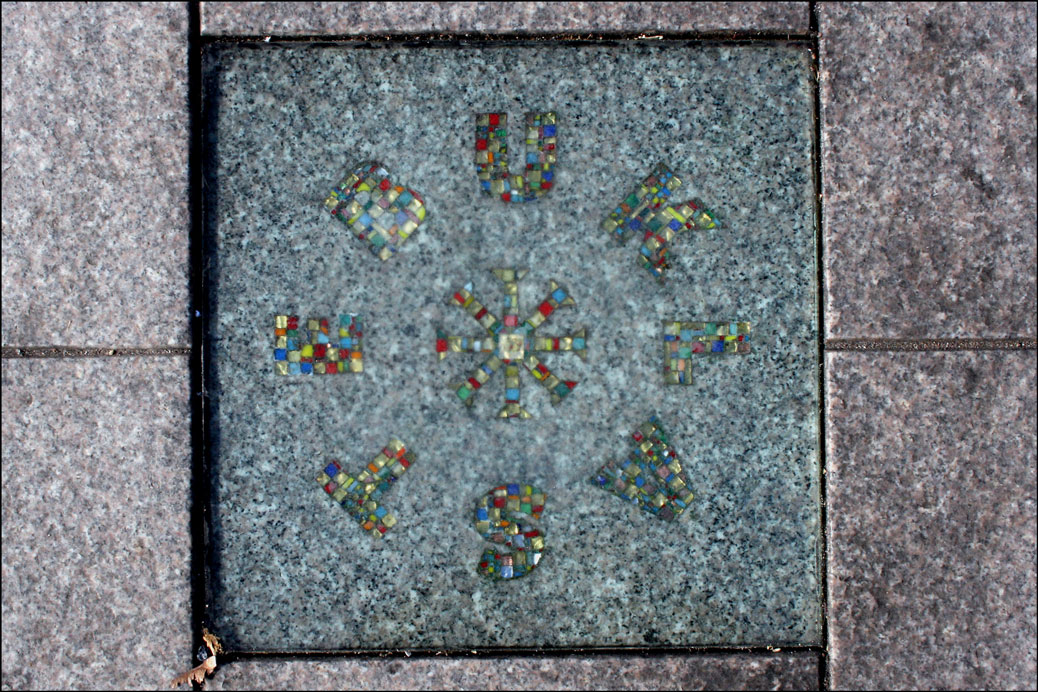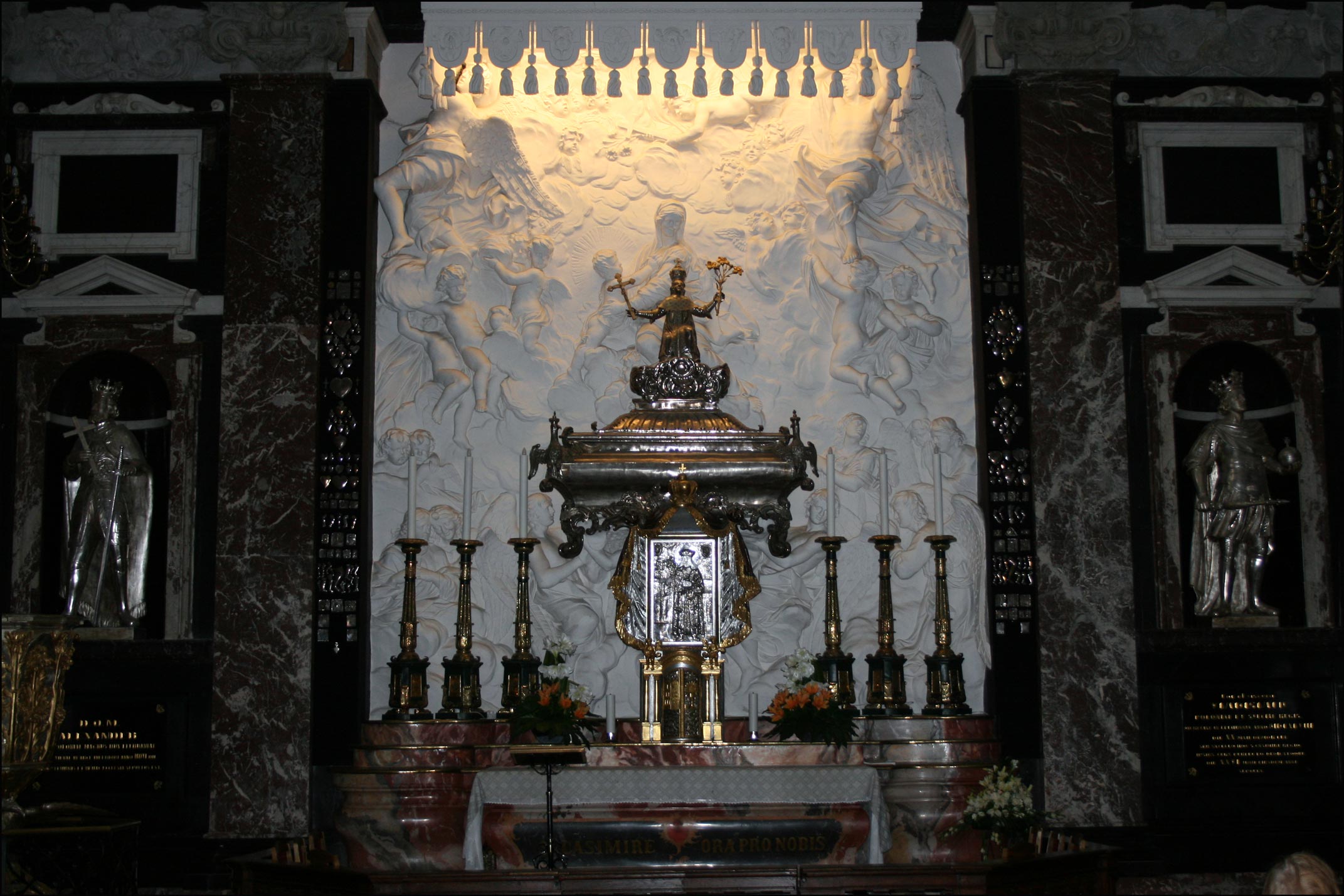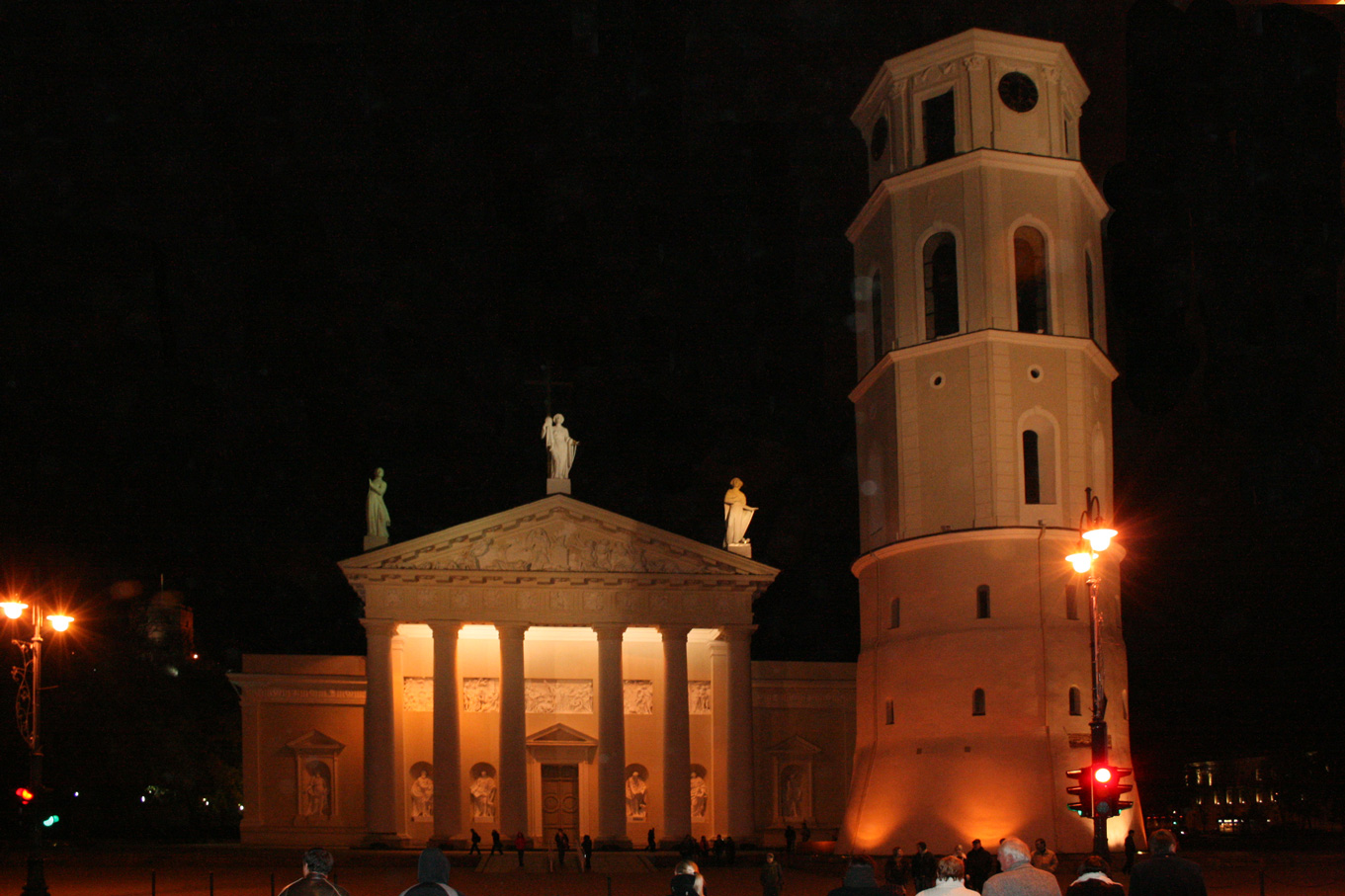The Roman Catholic Vilnius Cathedral is built on the site of an ancient pagan temple dedicated to Perkūnas, the god of thunder and fire. Five different cathedrals have been built on this site, each one destroyed by war or natural disaster.
The Vilnius Cathedral
SOURCE: The Vilnius Cathedral, Vilnius, Lithuania. Photographed by Stephen J. Danko on 25 October 2007.
Under Stalin and Soviet rule, the statues of Saints Helena, Casimir, and Stanislaus on the roof were destroyed. The Cathedral was used as an auto repair shop. After Stalin’s death, the Cathedral was converted to an art gallery. In 1988 the structure was returned to the Roman Catholic Church and eight years later the statues of Saints Helena, Casimir, and Stanislaus were replicated and replaced.
Altar of the Vilnius Cathedral
SOURCE: Altar of the Vilnius Cathedral, Vilnius, Lithuania. Photographed by Stephen J. Danko on 25 October 2007.
In Cathedral Square, surrounding the cathedral itself, there exists one paving stone that is different from all the others. On it is the word “stebuklas”, the Lithuania word for “miracle”. Local legend says that you must search for the miracle stone yourself – no one can reveal the exact location. When you find the stone, you can make a wish while turning 360 degrees clockwise.
The Miracle Stone
SOURCE: The Miracle Stone in Cathedral Square, Vilnius, Lithuania. Photographed by Stephen J. Danko on 25 October 2007.
Like other cathedrals, the Vilnius Cathedral contains many small chapels. One such chapel is the 17th Century Baroque Chapel of St. Casimir which survived the destruction of the previous cathedral and was incorporated into the present one. This chapel contains the remains of St. Casimir, patron saint of Lithuania, who died of Tuberculosis in 1484 at the age of 25. Casimir was the son of Casimir IV Jagiellon and grandson of Władysław II Jagiełło both of whom, in their respective times, served as Grand Duke of Lithuania and King of Poland.
Click on the photograph of the Chapel of St. Casimir and look closely at the white plaster depiction of the Madonna and Child behind the altar and notice how oddly broad the Blessed Virgin’s smile is. Though not clear enough in this photograph to notice, the silver portrait towards the bottom of the photograph shows St. Casimier with three hands, depicted in this way to emphasize his generosity.
The Chapel of St. Casimir
SOURCE: The Chapel of St. Casimir in the Vilnius Cathedral, Vilnius, Lithuania. Photographed by Stephen J. Danko on 22 October 2007.
Outside the cathedral stands the Clock Tower. The lower tier of the Clock Tower was part of the 14th century fortifications of the Lower Castle and contains many gunports. Two additional tiers were added in the 1520s to convert the structure to a bell tower. A fourth tier, added still later, contains a clock.
The Vilnius Cathedral and Clock Tower at Night
SOURCE: The Vilnius Cathedral and Clock Tower at Night, Vilnius, Lithuania. Photographed by Stephen J. Danko on 22 October 2007.
Copyright © 2007 by Stephen J. Danko

